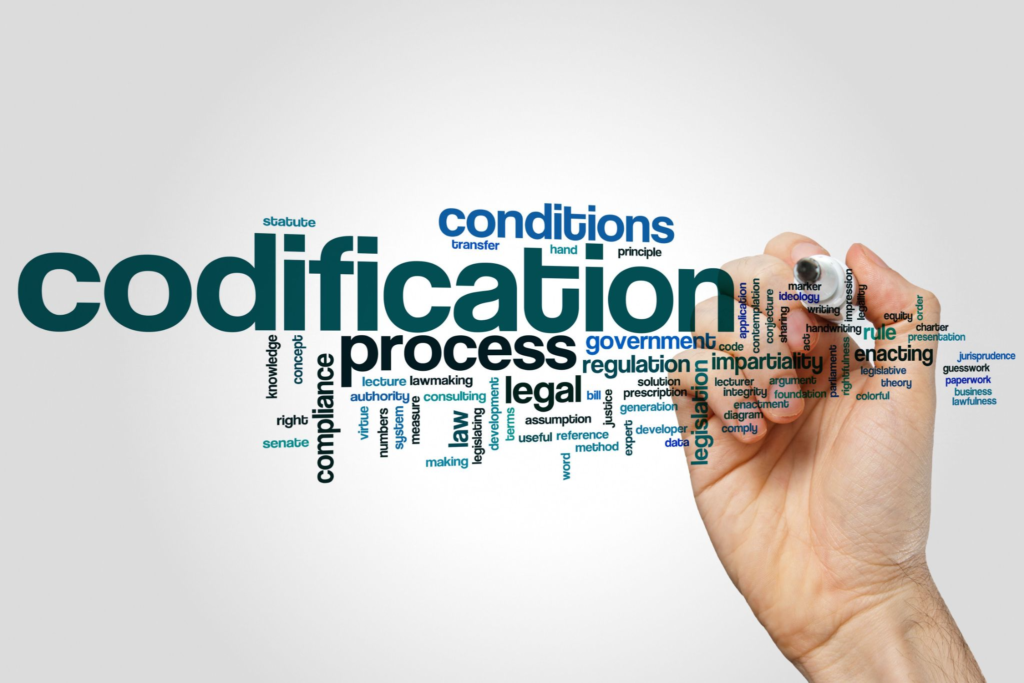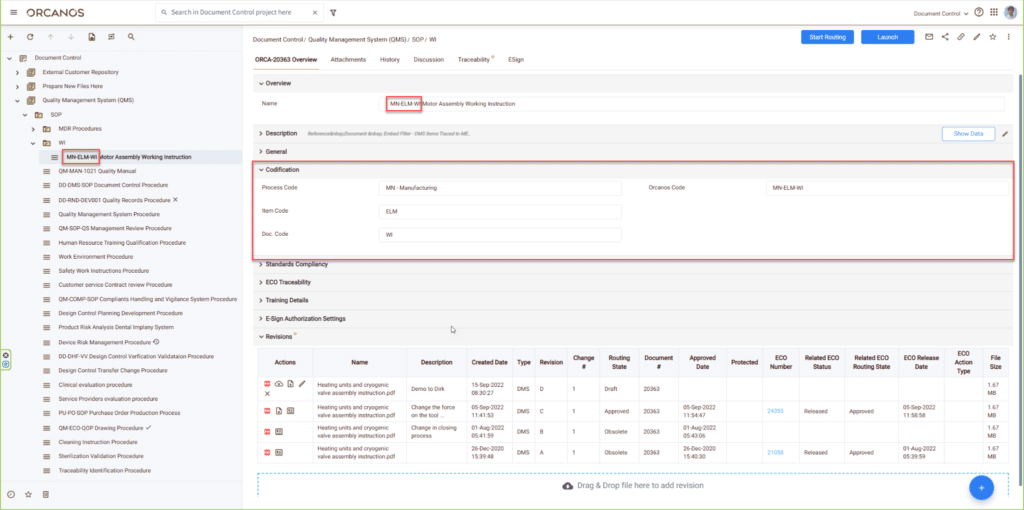Best Practices for Codification in Product Development
In this article, we will explore some of the key best practices for codification in product development.
In this article, we will explore some of the key best practices for codification in product development.

One of the fundamental aspects of codification is to establish a clear and consistent naming convention for all components and features within a product. Clear naming conventions improve team communication, reduce confusion, and promote efficient collaboration. It is essential to develop a naming convention that aligns with the product’s domain, is intuitive, and avoids ambiguous or misleading terms.
Orcanos’ codification feature offers several functionalities that aid in identifying documents within its document control system. Orcanos streamlines document management with various features including search tools, categorization, metadata, and reporting. This feature enhances efficiency, accuracy, and accessibility within the document control system, ensuring that users can easily identify and retrieve the required documents.

Organizing components and features in a hierarchical structure provides a logical and systematic approach to codification. Hierarchies allow for easy navigation and categorization, enabling team members to quickly locate and understand relationships between different elements. Utilize categories, subcategories, and sub-subcategories to represent the various levels of the product’s structure. This approach ensures a scalable and flexible framework that accommodates future additions or modifications.
Orcanos’ hierarchical structure offers a range of benefits in organizing a part catalog. Through categorization and subcategorization, logical organization, flexibility and scalability, relationships and dependencies, easy navigation and filtering, and improved collaboration and knowledge sharing, Orcanos provides an effective framework for managing and organizing parts. This hierarchical structure enhances efficiency, promotes effective communication, and enables easy access to the required parts within the catalog.

In product development, changes are inevitable, and maintaining version control is crucial to avoid confusion and maintain consistency. Implement a version control system that allows for efficient tracking of modifications and ensures that team members are working with the most up-to-date versions of components and features. By clearly documenting changes and providing a history of revisions, version control helps in troubleshooting, debugging, and maintaining the integrity of the product.
Note: version control labels can be part of the codification algorithm.
To effectively develop a product, it is essential to have teamwork and coordination across various departments. For instance, the design team must work closely with engineering to ensure that the product is both aesthetically pleasing and functional. Additionally, marketing should be involved in the process to ensure that the product aligns with the overall brand strategy and target audience. Ultimately, effective collaboration between these departments is crucial for developing a successful product. Codification acts as a common language that facilitates communication across these different functions. Encourage cross-functional collaboration by ensuring that the codification system is accessible and understandable to all team members. Conduct regular training sessions to educate team members on codification practices and their benefits, fostering a shared understanding and promoting collaboration.
Orcanos’ codification feature is vital in facilitating collaboration between engineering and quality teams. Through standardized terminology, clear identification and referencing, streamlined issue tracking and resolution, efficient change management, enhanced traceability, and integrated workflows and notifications, Orcanos enables effective communication, coordination, and collaboration between these essential departments. Collaboration improves product quality and teamwork between engineering and quality teams to achieve shared goals.

Comprehensive metadata and documentation provide additional context and information about each component and feature. Attributes found in metadata may include functionality, dependencies, compatibility, and usage guidelines. This additional information assists team members in making informed decisions and helps avoid potential errors or inconsistencies. Documentation should be easily accessible and regularly updated to reflect changes in the product and its codification system.

Codification is an iterative process, and regular reviews are essential to ensure its effectiveness. Conduct periodic reviews to evaluate the system’s performance, identify areas for improvement, and gather feedback from team members. Consider holding retrospective meetings to discuss challenges faced and suggestions for enhancing the codification practices. By incorporating feedback and continuously improving the system, organizations can adapt to evolving needs and optimize their product development processes.
Establishing clear naming conventions, using hierarchical structures, implementing version control, fostering cross-functional collaboration, employing metadata and documentation, and conducting regular reviews are essential for successful product development. By following coding best practices, teams can not only enhance communication but also increase productivity and minimize errors. This ultimately leads to more successful product development.
Related links: OpenBOM